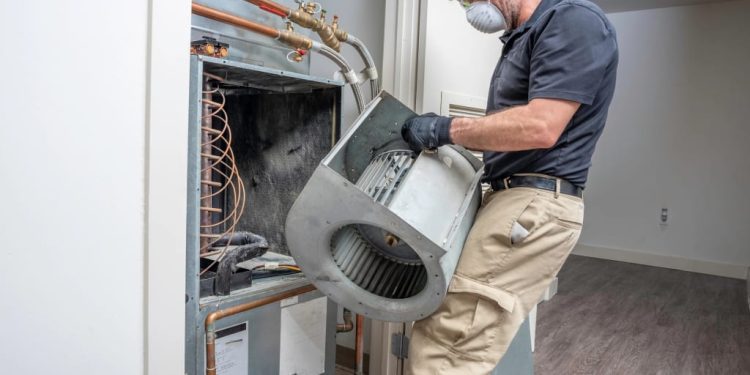When it comes to maintaining a comfortable and efficient home, the condition of your furnace plays a critical role. Over time, even the best-made furnaces can start to show signs of wear and tear, leading to inefficiency, higher energy costs, and even potential safety hazards. In these cases, furnace replacement becomes a necessary step to ensure your home stays warm during the colder months without breaking the bank. In this article, we’ll explore the signs that indicate you need a furnace replacement, the benefits of upgrading, and key considerations when making the decision to replace your furnace.
When to Consider Furnace Replacement
Furnaces don’t last forever. Depending on the model and how well it’s maintained, most furnaces have a lifespan of about 15 to 20 years. However, several signs indicate it may be time for a replacement well before your furnace hits the end of its lifespan. Here are some key indicators that your furnace may need to be replaced:
- Frequent Repairs: If your furnace requires constant repairs, especially after it’s 10 to 15 years old, it’s often more cost-effective to replace it. Continuing to patch up an old furnace could quickly become a financial drain.
- Rising Energy Bills: As furnaces age, they lose efficiency. If you notice a significant rise in your energy bills despite no changes in usage, your furnace might not be running as efficiently as it once did. A more energy-efficient model could offer long-term savings.
- Uneven Heating: A furnace that can no longer heat your home evenly might be showing signs of internal damage. If some rooms are much colder than others, it’s time to consult a professional to see if replacement is the most viable option.
- Strange Noises: If your furnace is making loud or unusual noises like banging, clanking, or squealing, these sounds could be a sign of a malfunction. Such issues often indicate that key components are failing, making furnace replacement a more reliable solution.
- Yellow Pilot Light: A yellow or flickering pilot light instead of the normal blue flame could indicate a carbon monoxide leak, which is a serious safety concern. In this case, immediate furnace replacement is necessary for the safety of your family.
Benefits of Furnace Replacement
Investing in furnace replacement offers numerous benefits, both immediate and long-term:
- Improved Energy Efficiency: Modern furnaces are built with advanced technology that improves energy efficiency. Replacing an old furnace with a new ENERGY STAR® rated unit can reduce energy consumption and lower your monthly utility bills.
- Enhanced Comfort: Newer furnaces are designed to distribute heat more evenly and maintain a more consistent temperature throughout the home. This leads to better comfort, particularly during the coldest months.
- Increased Home Value: A new furnace can enhance your home’s appeal to potential buyers, particularly if you’re planning to sell. Homebuyers often look for homes that require fewer immediate repairs, and a new furnace can be a major selling point.
- Better Indoor Air Quality: Old furnaces often accumulate dust and debris, leading to poor indoor air quality. A new furnace with a quality filtration system can improve the air you breathe by removing allergens and dust from your home.
- Reduced Carbon Footprint: With energy-efficient models, you can reduce your home’s carbon footprint, making it more environmentally friendly. Newer models produce fewer emissions and use less fuel to operate.
Key Considerations When Replacing Your Furnace
When deciding on furnace replacement, it’s essential to consider several factors to ensure you choose the right model for your home:
- Size of Your Home: The size of your furnace must be appropriate for the square footage of your home. A unit that’s too small will struggle to heat your home efficiently, while one that’s too large will cycle on and off too frequently, wasting energy.
- Fuel Type: Furnaces run on various fuel sources, including natural gas, oil, propane, and electricity. When replacing your furnace, consider the cost and availability of the fuel type, as well as the efficiency of each option.
- Efficiency Ratings: Pay attention to the AFUE (Annual Fuel Utilization Efficiency) rating when selecting a new furnace. The higher the AFUE rating, the more energy-efficient the furnace is. A high-efficiency model may cost more upfront but will save money over time due to lower operating costs.
- Installation Costs: While the cost of a furnace replacement varies depending on the brand and model, installation is an additional factor to consider. Professional installation ensures that the furnace is properly set up to maximize efficiency and safety.
- Warranties and Maintenance: Look for a furnace that comes with a solid warranty to protect your investment. Additionally, consider the maintenance needs of the new unit. Some models are easier to maintain than others, which can save you time and money in the future.
Conclusion
Furnace replacement is a significant investment, but it’s one that can pay off in many ways. Not only will a new furnace improve your home’s energy efficiency and comfort, but it can also increase the value of your property and ensure your family’s safety. If you notice any of the signs mentioned earlier or if your furnace is simply getting old, it might be time to start planning for a replacement. Be sure to consult with a trusted HVAC professional to determine the best options for your home and budget. With the right furnace replacement, you can enjoy a warm, comfortable, and energy-efficient home for years to come.
















